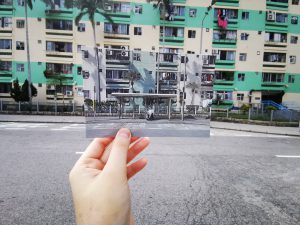
Still Human, which is released in November 2018 by Golden Scene¹, tells a heartwarming tale about a paralyzed middle-aged man Leung Cheong-wing and his young Filipino domestic helper Evelyn who learn how to embrace their life. The film sets in Oi Man Estate, Ho Man Tin where is the public housing area for grassroots with diverse facilities for daily life, e.g. Cha Chaan Teng and park for a stroll. The movie starts and ends with the bus stop where two main characters firstly met at and part from.
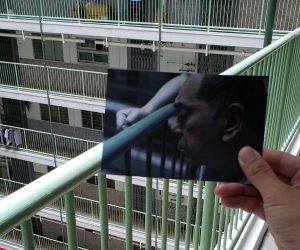
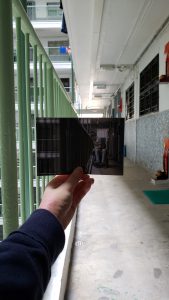
Oi Man Estate in the movie is presented as similar as in reality besides the colour tone is tuned according to different atmosphere. At the beginning when Cheong-wing and Evelyn have resentment about their unfortunate circumstances, color tone in film is more cyan and dismal, e.g. in the bus stop scene, the colour is likely faded away ,while the lighting in corridor is dimmer than in reality that exaggerates the depression of Cheong-wing and the strong color contrast deepens his facial expression, moreover more void is in the frame when conveying his loneness while much compacted space is framed to depict his sadness. In the reality, public housing area is void that I barely met a resident inside the building. Whilst they embrace each other and are open-minded to adversity, the colour tone becomes more vivid and gleeful, e.g. a place for taking a stroll on a nearby pathway along with trees, that green in tree is brighter than in reality and its shadow is strengthened. Also, that area is depicted differently in the movie and in the reality that it is a road with many vehicles passing by but it is depicted as a cozy pathway in the film.
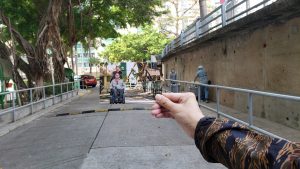
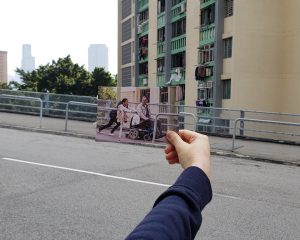
Oi Man Estate is filmed similarly with the reality as the “place” and “space” in this area fit the film’s settings and atmosphere which create a narrative place for a hopeless man’s everyday life which confined to a wheelchair and in a small flat with his new domestic worker who put her dream aside and came to Hong Kong for earning a living. Because of Cheong-wing’s disability, he always spends his days in the crowded flat where is a dark, clogged with clutter and walled space by concrete walls. This cramped space depicts their dreadful mind. Moreover, it creates a situation that limits their activities so they are forced to face and communicate each other. Thus, this interior space starts off the story line with a scratchy communication and later establish a harmony relationship. Oi Man Estate to them is a place for memories more than a space for living, so the colour tone changes lively when they overcome the past that Evelyn starts pursuing her dream with her peer Cheong-wing. Warm and Vivid colour provides strong impression in depicting fond moment and hope for future. Place is illustrated in different colour tones to narrate the time when they are frustrated with life, brighten up their hopeless life and comfort each other.
— Lai Man Ching Ruby, 3035825083
Notes:
1 Produced by the No Ceiling Film at an estimated cost of HK$3.25 million, the film was directed by Oliver Chan and Fruit Chan and starred Hong Kong actor Anthony Wong and Filipina actress Crisel Consunji.
Appreciate your conscious attempt and attention to the meticulous details as you matched the film scene to the real-life photo during your fieldwork! You mentioned how the colour scheme/tone was set to match the relationship between the protagonists. Would you think the spaces where the scenes happened also represented a similar thing? If so, how have such spaces were narrated throughout the film? As you also mentioned about “place” and “space”, it would be worthwhile to elaborate a bit more on which “places(s)” was practised as “space(s)” in the film? Relating your analysis to one of the key ideas we have discussed in the class will be helpful for you to read through the site and build your argument. When you do so, remember to cite the work properly as well.